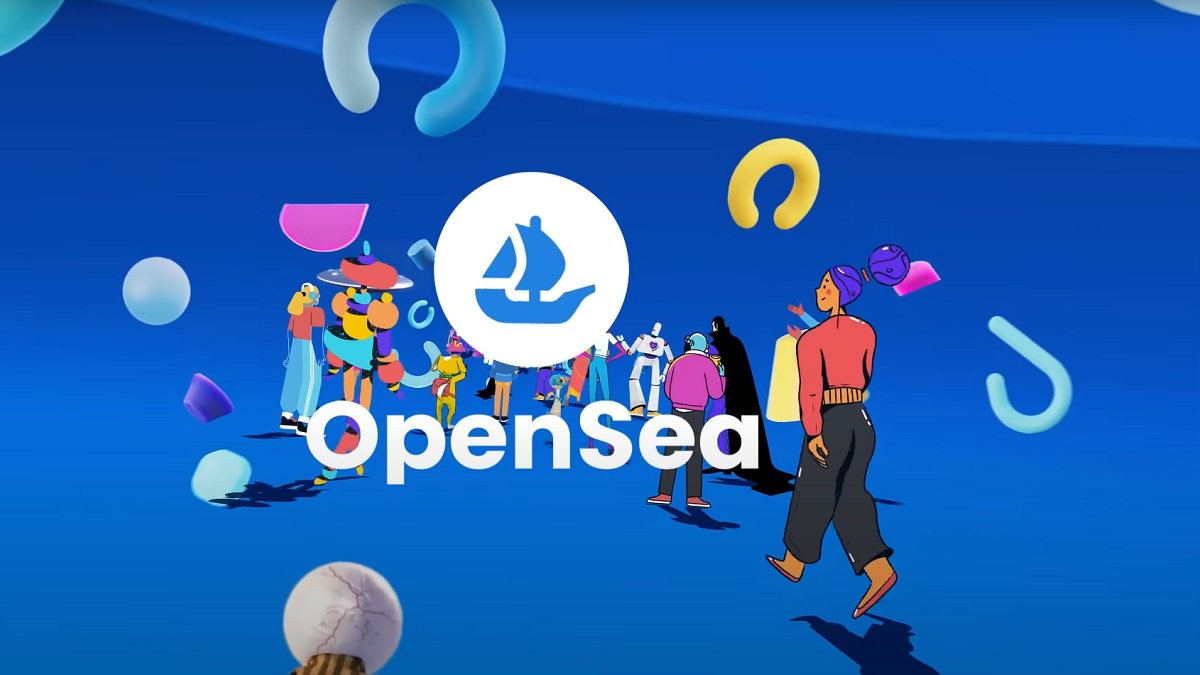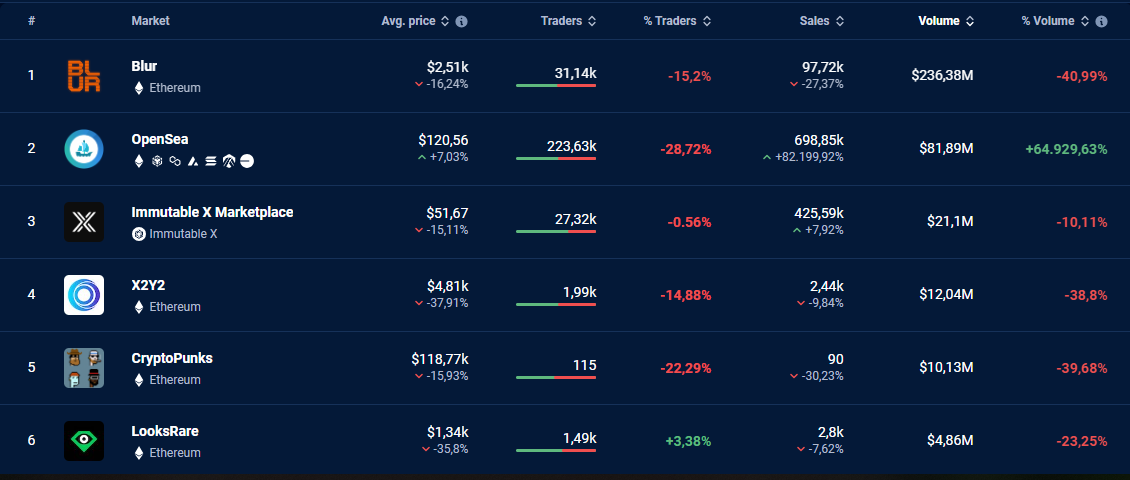Recently, OpenSea has been making product improvements as well as reducing transaction fees to compete with Blur in regaining market share in the NFT market. Recently, OpenSea continued to announce that they will adjust the license fee to be customizable. But this decision faced a lot of controversy from the community. In this article, let’s join Weakhand to learn about OpenSea’s changes in copyright fees as well as stories surrounding this issue.
Before jumping into the article, everyone can refer to some of the following articles to understand better:
- What is OpenSea? OpenSea cryptocurrency overview
- What is NFT (Royalties fee)? The secret to helping Blur surpass OpenSea
- What is NFT Marketplace? Operating mechanism and some prominent NFT Marketplaces
- NFT Marketplace War and the ultimate winner
OpenSea Improves Creator Royalty Enforcement
On August 18, 2023, OpenSea changed its creator royalty enforcement policy with key changes including:

OpenSea regulates license fees
- Stop using OpenSea Operator Filter from August 31, 2023. This means that the Operator Filter is no longer blocking any NFT Marketplaces.
- For collectibles with the Operator Filter applied and for collectibles available on all non-Ethereum blockchains, OpenSea will enforce creator royalties on all NFTs sold on secondary market from August 31, 2023 to February 29, 2024.
- For new collections, an optional royalty mechanism will apply. This means that NFT sellers will have increased flexibility in choosing creator royalty rates for all secondary market sales.
In the Blog post, OpenSea clarifies that “creator royalties are not going away – enforcing them unilaterally is simply ineffective” so OpenSea has transitioned to a royalty model option to connect and bring about a common understanding between NFT sellers and creators.
Mixed Community Reactions
OpenSea’s new decision on custom licensing fees has brought mixed opinions to the community. There are some who agree because custom licensing fees can help users feel more comfortable buying and selling NFTs, thereby increasing the amount of liquidity in the market.
However, some opinions believe that this is disrespectful to the artists and creators who have created unique works of art on the market. Some big names in the market have spoken out and have new policies to protect creators as follows:
Yuga Labs blocks NFT trading on OpenSea
Yuga Labs is one of the major NFT brands that has spoken out against OpenSea’s extremely controversial decision to remove mandatory royalty enforcement by blocking all support for any new NFT collections. or what upgrades are possible on OpenSea’s SeaPort before February 2024.
Yuga Labs – the parent company of the two largest NFT collections on the market, CryptoPunks and Bored Ape Yacht Club (BAYC) has announcement on Twitter that they are committed to fostering an ecosystem where creators are rewarded for their work.
This decision by Yuga Labs is a strong blow to OpenSea when as everyone knows, NFT collections in the Yuga Labs ecosystem account for 40 – 60% of the transaction volume in the NFT market. However, one thing to note is that Yuga Labs only accounts for about 10% of SeaPort’s trading volume. Additionally, Yuga Labs’ highest-volume collections do not have upgradable contracts implemented. This shows that the impact of them leaving SeaPort is not as great as people thought. But in general, this decision also caused OpenSea to suffer certain losses through the rejection of Yuga Labs.
Rarible and Nifty Gateway Reactions
Rarible has made his point clear on Twitter with hashtags #StandForRoyalties, shared that they “stand in solidarity with creators and artists” by always supporting copyright fees for artists and creators. Meanwhile, Nifty Gateway also joined the chorus of voices on the issue, stating that it will always continue to respect the royalties of creators on its platform.
OpenSea Vs Blur: The Battle for Domination in the NFT Market
Once a leader in the NFT market space, OpenSea now faces continued challenges from Blur. On August 19, 2023, OpenSea also revealed its decision to stop supporting BNB Chain and shift its focus to Layer 2s like Base.
OpenSea’s recent shift in focus appears to be primarily geared towards increasing trading volumes, and a comparison of trading volumes on both platforms may support this assumption.

Trading volume on NFT Marketplaces over the past 30 days
As of August 21, 2023, Blur boasts a 30-day trading volume of 236.38M USD, much higher than OpenSea’s only 81.89M USD. Market share analysis paints a clear picture, with Blur holding a 44% market share and OpenSea closely following the 13% figure in August. Although Blur has higher NFT trading volume than OpenSea, OpenSea contributes the majority of royalty revenue to creators.
This is because OpenSea still applies mandatory royalty rates for NFT collections such as: Bored Ape Yacht Club (BAYC), Azuki,… Meanwhile, Blur applies custom royalty rates for for sellers, so although the transaction volume on Blur is much higher, the revenue from licensing fees is lower than OpenSea.
summary
OpenSea’s decision to adjust license fees has faced a lot of opposition not only from the community but also from large projects. Overall, the battle for market share in the NFT market in general and between OpenSea and Blur in particular is causing platforms to create many product improvements as well as reduce transaction fees and copyright fees. This is great for NFT traders but is disrespectful to creators since royalty fees are their only source of revenue. Above is all the information I want to provide in this article, hope everyone has received useful knowledge.


